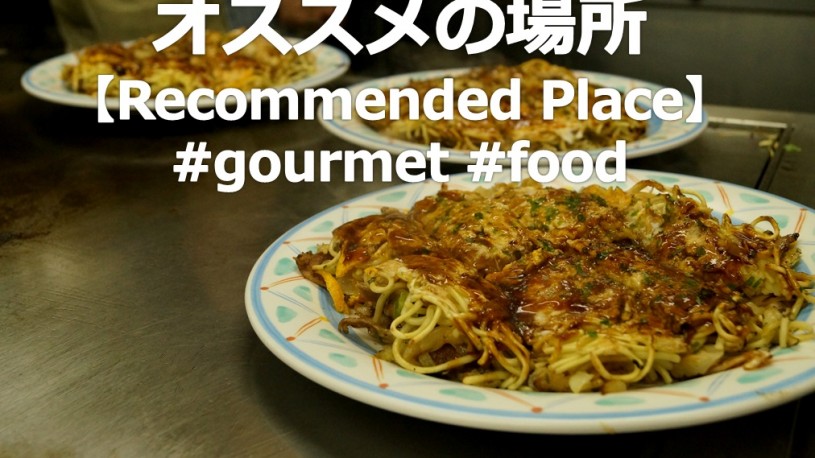Hi. I’m Hazuki, owner of the hostel.
Previously, I wrote the following articles on surprisingly cheap restaurants in Japan.
• Italian: “Saizeriya”
• Japanised Chinese: “Gyōza no Ohsho”
• Gyūdon Chains
• Other: Chinese Restaurants in the City
Today, I warmly recommend you one chain in particular!
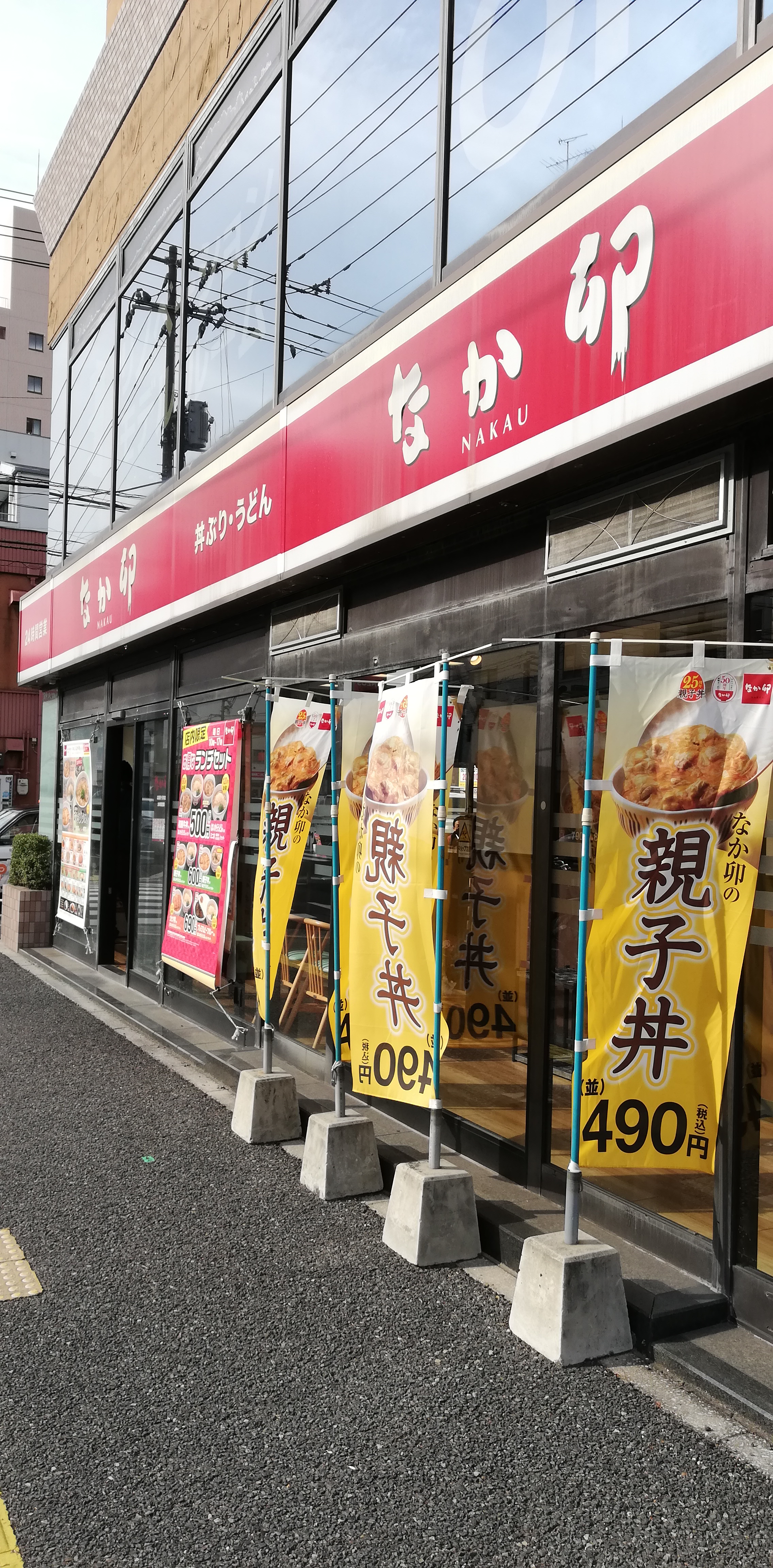
なか卯(なかう)!NAKAU!!
It’s also conveniently located near our hostel.
Outside the restaurant, these amazingly cheap offerings are posted up. Lunch for 500 yen, that’s pretty good.

I’ll explain Nakau’s ticket ordering system.
First, you buy a ticket at one of the two ticket machines at the entrance. For those who can’t read Japanese, the machines can be set to English, Chinese, and Korean.
• Choose between ‘Eat-in’ or ‘Takeaway’
• Pick a category
• Select your meal
• Pay
• Receive your ticket and hand it over to the cashier
However, if you need to explore the available options, look at the paper menu first. These menus are dispersed among the seats in the restaurant, so it’s better to borrow one of them from an empty seat. I took a picture of the menu for you to look at ↓
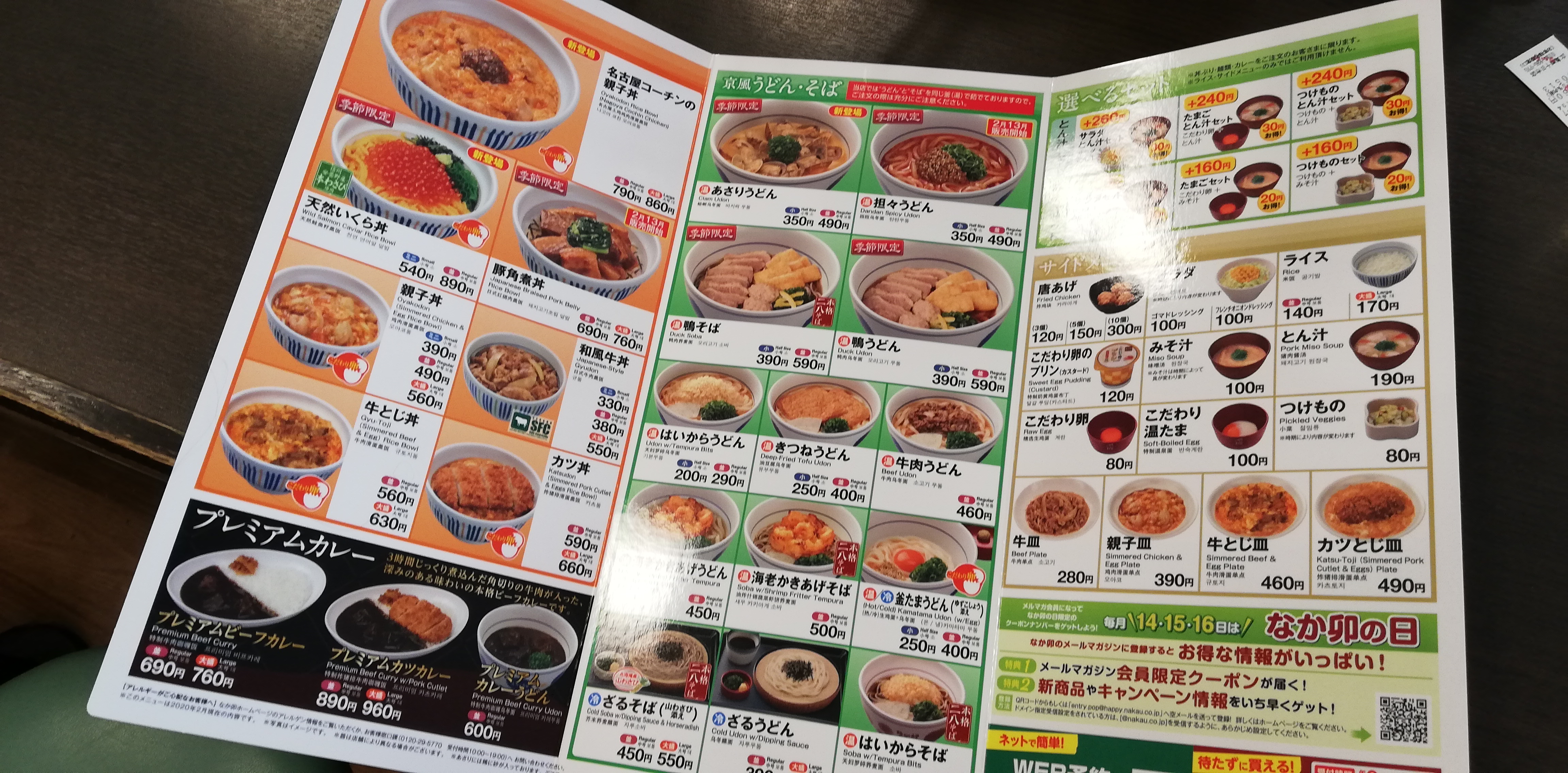
The ticket vending machines these days are quite amazing. The moment a customer makes a purchase and pays, the contents of the meal ticket are automatically transmitted to the kitchen staff via voice or a monitor. Since staff can start cooking as soon as the order is confirmed, serving time is shortened compared to when the customer has to arrive at the table before finally placing their order, resulting in a faster rotation of seats — the crux of a profitable restaurant. As a hungry customer, I want to be able to start eating as quickly as possible. The turnover ratio of the seats of a restaurant — and for this type of restaurant, the peak is usually around lunchtime — is very important. Since it is impossible for restaurants to increase the number of seats, the number of times a fixed number of seats is used, is key!
And now, the reason I love this chain… is because they have oyakodon!
Oyakodon is a bowl of white rice (donburi), topped with boiled chicken, mixed with scrambled eggs. If ‘oyakodon’ were to be translated to English literally, the result would be ‘parent-and-child donburi’. Or what about ‘family donburi’? Chicken + eggs = family!
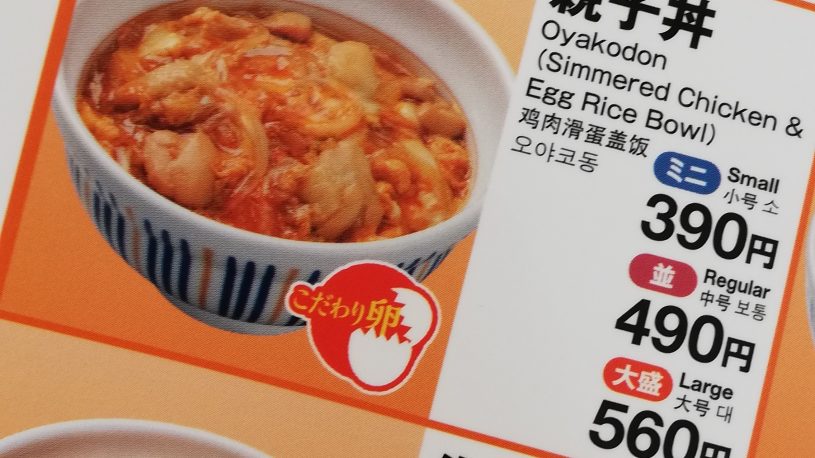
After a little bit of patience, a piping hot rice bowl of taste arrives. Ah, I just remembered the correct English translation: it’s a ‘Chicken and Egg Bowl’!
Let’s be careful not to burn ourselves as we begin devouring our oyakodon. The white rice in donburi is always hot as hell.
Soft chicken meat, braised in dashi, covered in silky-soft and deliciously yellow scrambled eggs. Below, a generous amount of pure white rice. And finally, the indispensable finishing touch: crispy bits of onion.
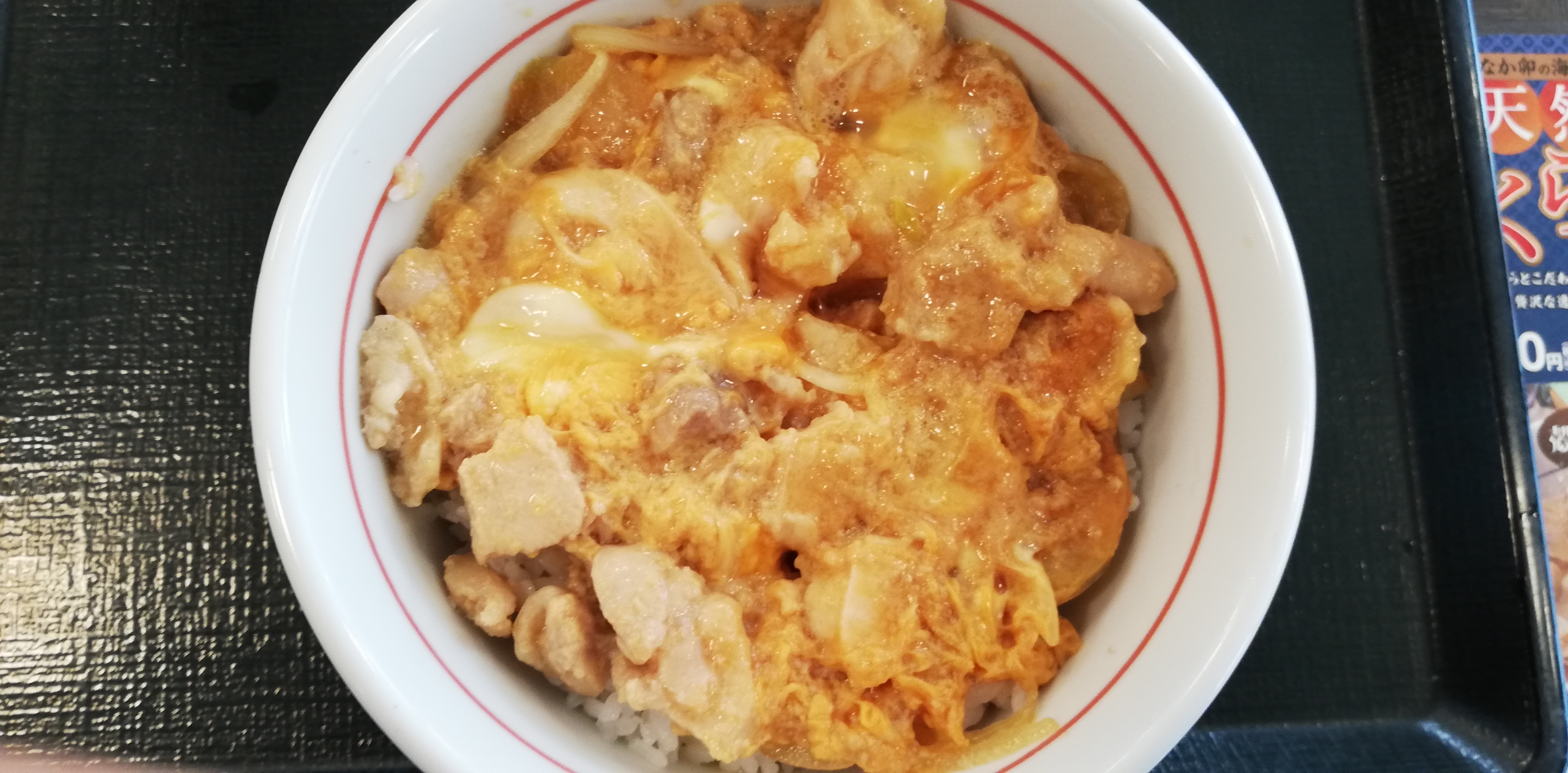
This is where the ceramic china spoon at every seat comes in to help, if needed. Don’t worry, it’s not considered bad manners to use this! Everyone knows this dish is difficult to eat…For some reason, the combination of these ingredients in one dish is decisively more appetising than when each of them are served separately. Why is that? Is this a rule of the universe?
Before even realising, a considerable portion has found its way to my stomach. But, let’s not think about the calories, say “Gochisōsama” and head home with a smile. Thanks to the ticket system, the bill has already been paid. Easy-peasy!



